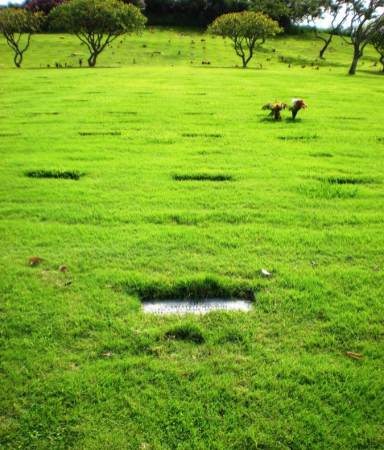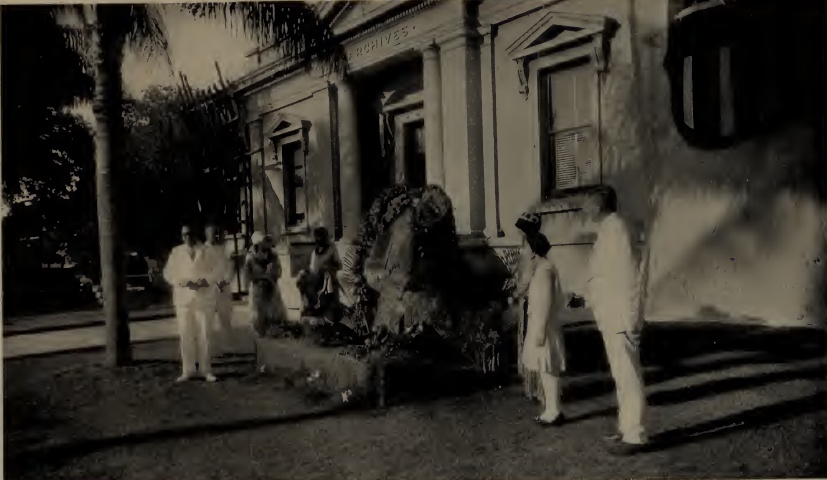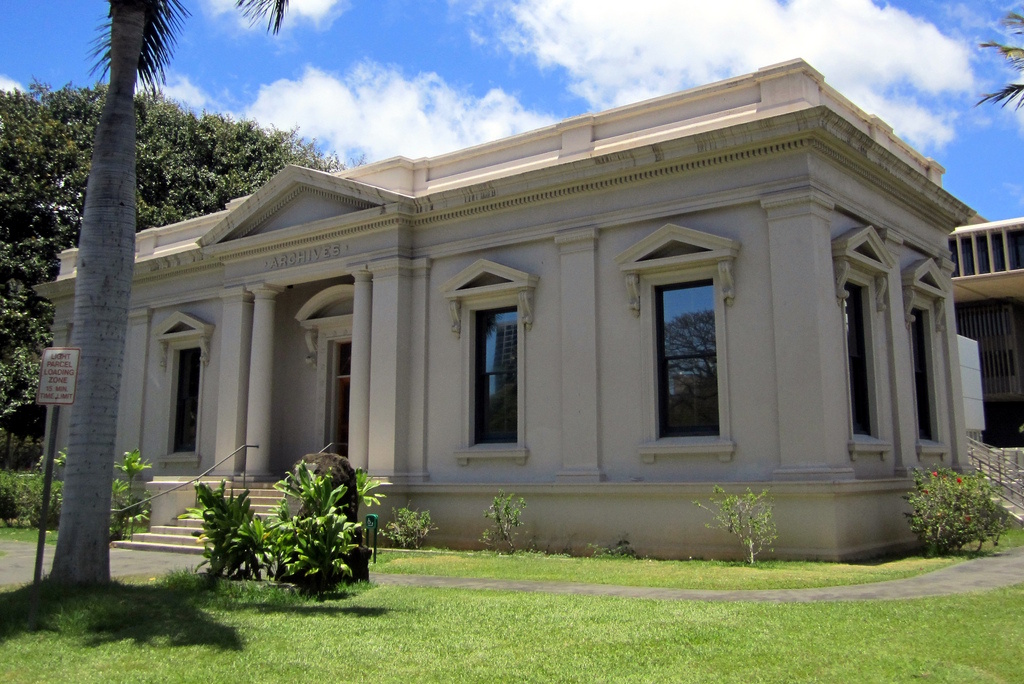In the middle 1800s, ranching became a significant economic engine in the Hawaiian Islands. On Lānai, Mānele Landing served as the port of call for ships picking up cattle, sheep and goats; and also in service of passengers and freight.
Ranching was the primary commercial enterprise on Lānai between 1860 to 1922. Initial activities focused on goats and sheep, but by the early 1900s cattle had become the primary stock.
To ship the cattle (in Hawaiian, pipi) to Honolulu, the animals were driven down to Mānele, held in pens, and then loaded on interisland steamers.
“They used to send cattle out, and then the Inter-island Steam [Navigation] Company’s boat, you know, freighters, used to come in, take those cattle to Honolulu, O’ahu, anyway.” (Fusako Nishimura Uchimura, UHM Oral History)
“In the early 1900s there were not as many wharves as there are today, and it was in few places that stock could be loaded onto the vessels through chutes as is more general now. The steamer would be anchored out from the shore and a heavy line run to some attachment on the land.”
“A boat was then tied to this shoreline and held in deep water. The cattle would be in a corral above high water or were driven out into the water and kept there by the surrounding cowboys.”
“On Lānai the corral was at Mānele at the top of a wide beach separating it from the sea. A lasso was thrown over the horns of one of the animals in the corral, the other end held by a man on horseback, and it was herded out and down the beach following the horse.”
“The animal’s efforts to escape brought it into the water as the horse headed for the boat. When within reach, just as the led animal lost its footing and the horse was reaching for the bottom with its hind feet the cowboy threw the rope to the men in the boat who would then throw another rope back to him.”
“The boat, with several beasts securely tied to the thwarts on each side, would be towed back to the steamer. Slings were adjusted to the animals and in turn they were hoisted to the deck and tied along the sides.”
“In fine weather this worked out well, but when rough it was risky, and sometimes cattle were injured or drowned. … so we devised a portable chute in sections, for bringing the stock to the water’s edge. The sections were drawn up when not in use. This was a great improvement, but we were not yet satisfied.”
“A corral was then built at the top of a low cliff overlooking a small tidal shelf with fairly deep water close to it. A chute was run out to above the edge of the tidal shelf close to deep water and supported there by posts.”
“Into this another chute was telescoped which, when run out over the water, reached to the deck of the steamer. By using a calf led down the chute, the large cattle were induced to follow, and the loading was done in a few minutes.”
“The calf was brought ashore ready for the next shipment. The steamer then pulled out, and the cattle were tied up as she proceeded on her way.”
“Even with this method, the work could still prove more or less harassing with changes of weather. After the Hawaiian Pineapple Company built the Kaumalapau Harbor and wharf, the cattle were shipped from the wharf through a chute. The pen and chutes were movable and, when not in use, kept out of the way of other work.” (Munro:105)
“I think more in the ‘20s, maybe, that’s when they built that chute. That thing was really something. You know they’d lead the calf down. The cows all follow the calf, they go right onto the ship.”
“But one time that thing broke, the cattle fell in the water. Some died; some, you see them swim. I didn’t know they could swim, they good swimmers. The cows, yeah.” (Violet Keahikoe Gay, UHM Oral History)
“They put the chute down onto the deck of the ship, and the ship would be going [i.e., bobbing] up and down, and the cattle would be bawling their heads off, and they’d have to be prodded to go down this chute to get onto the deck of the ship.” (Jean Forbes Adams, UHM Oral History)
“When I came over here, they had the chute and they had down. When too rough, the boat no can go by the side [of the chute], so they go by the sand side, everybody go swim. Over there, they rope ‘em and drag ‘em inside the water.” (Ernest S. Richardson, UHM Oral History)
After Kaumālapa’u harbor was built, “they still used Manele and the chute … Probably, since that was all built there. Yeah, Kaumalapau was strictly for pineapple shipping.” (Jean Forbes Adams, UHM Oral History)
With construction of the chute, the pipi could be driven along the cliffs to the chute and walked across the water onto the waiting boat. In addition to the “Pipi Chute,” a series of mortar salt making beds were built on the shore of the landing in the 1930s.
In May 1943, the salt making beds were moved to the cliffs. On the south side of the boat harbor were the salt beds and an old fence line that contained cattle as they were being driven down the chute for shipping to Honolulu. The salt beds were periodically filled with salt water, which evaporated and provided fresh sea salt for drying meat and treating hides.
On rough days, when the steamers couldn’t safely draw along the Mānele cliff side, cattle were driven into the ocean at Hulopo’e Beach. They were then tied up to a launch, which took them out to the steamer, and hoisted onto the boat for transport. Typically, anywhere from 30 to 70 cattle from Lānai were shipped in one trip.
By 1918, Charles Gay and family began experiments in planting pineapple on Lānai in the uplands near what would become Lānai City. Once harvested, the fruits would be taken by truck down to Mānele Landing via a stone and dirt trail that was almost impassable.
The crop was then loaded onto a small boat and transferred to Maui for canning. It was a difficult trip which caused the loss of much of the fruit, due to bruising. However, as a result of the Gay family’s success, James Dole’s Hawaiian Pineapple Company knew that the crop could be grown, and in 1922 Dole purchased almost the entire island of Lānai.
And the rest, as they say, “is history.”





















































